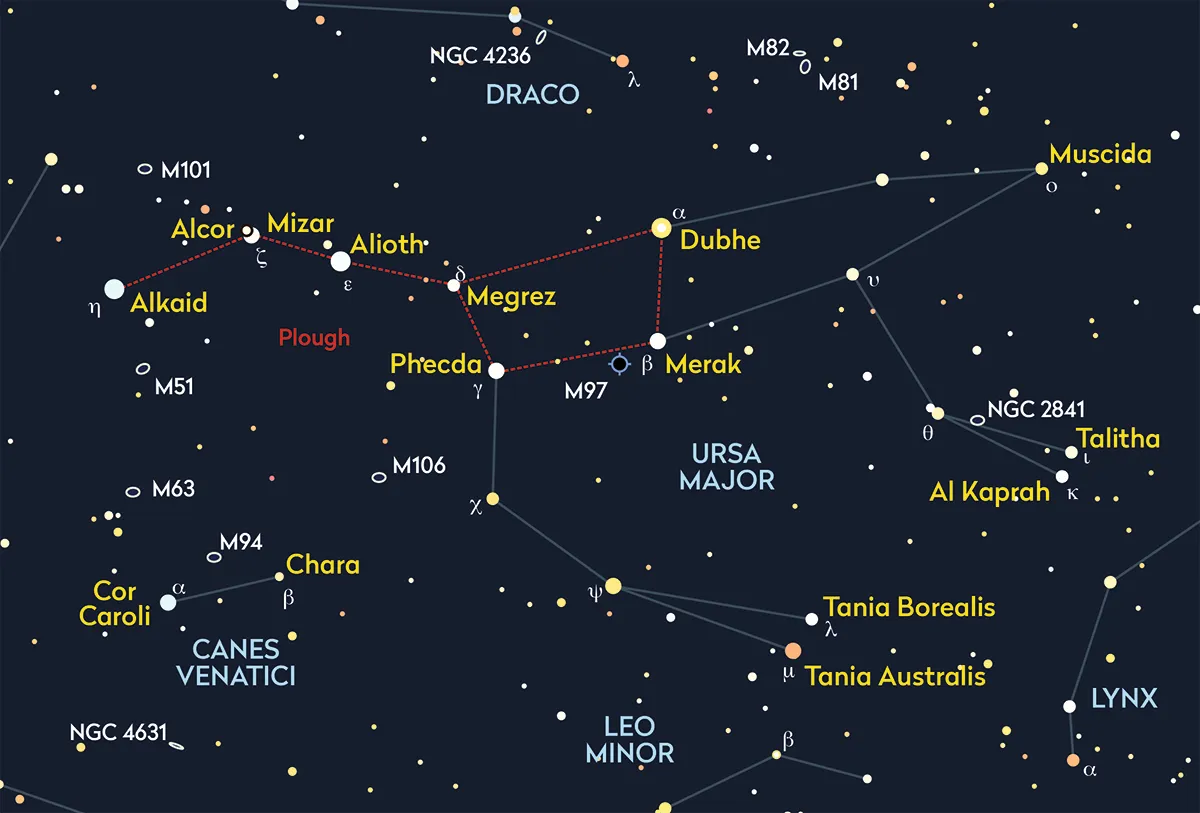Lying just 18° from the north celestial pole, Pherkad is circumpolar from the UK and never sets.
It’s a bright, giant of spectral class A3 III and sits 487 lightyears from the Sun. Pherkad is 15 times larger than the Sun and 1,100 times more luminous.
With a mass almost five times that of the Sun, Pherkad is likely close to 100 million years old.

How Pherkad compares to its constellation companions
Most people know what the Plough or Saucepan looks like, a distinctive seven-star pattern that is part of the Great Bear, Ursa Major.
The Little Bear, Ursa Minor, similarly has seven stars, three being in a curve starting from Polaris (Alpha (α) Ursae Minoris) that joins to a box shape.
As with the Plough, the pattern represents the little bear’s rump and tail, but unlike the Great Bear, the rest of the creature is not well represented.

The box’s two corner stars located closest to Polaris are fairly dim and easily lost from a site with medium light pollution.
These are mag. +4.3 Zeta (ζ) and mag. +4.9 Eta (η) Ursae Minoris.
The other two are brighter: mag. +2.1 Kochab (Beta (β) Ursae Minoris) and mag. +3.0 Pherkad (Gamma (γ) Ursae Minoris).
Together, Kochab and Pherkad are known enigmatically as the Guardians of the Pole.

A variable star
Pherkad rotates at 180km/s and is a variable star, but exhibits an odd form of variability.
Its brightness can change by less than a tenth of a magnitude over just a few hours.
The cause of this isn’t well known.
Originally it was classed as a shell star, which is one with a circumstellar disc of gas around its equator, but this seems to have disappeared.
This guide appeared in the May 2024 issue of BBC Sky at Night Magazine.
